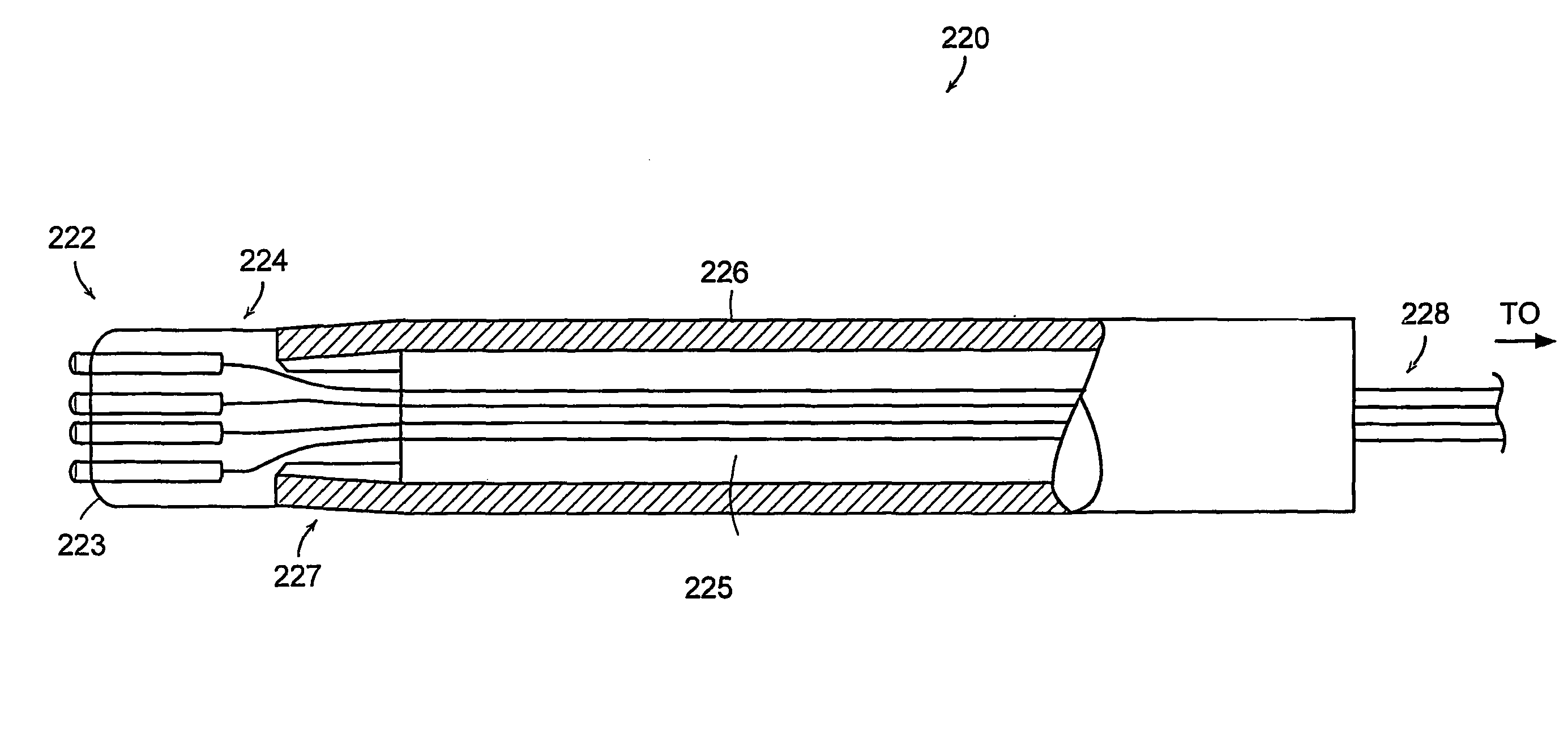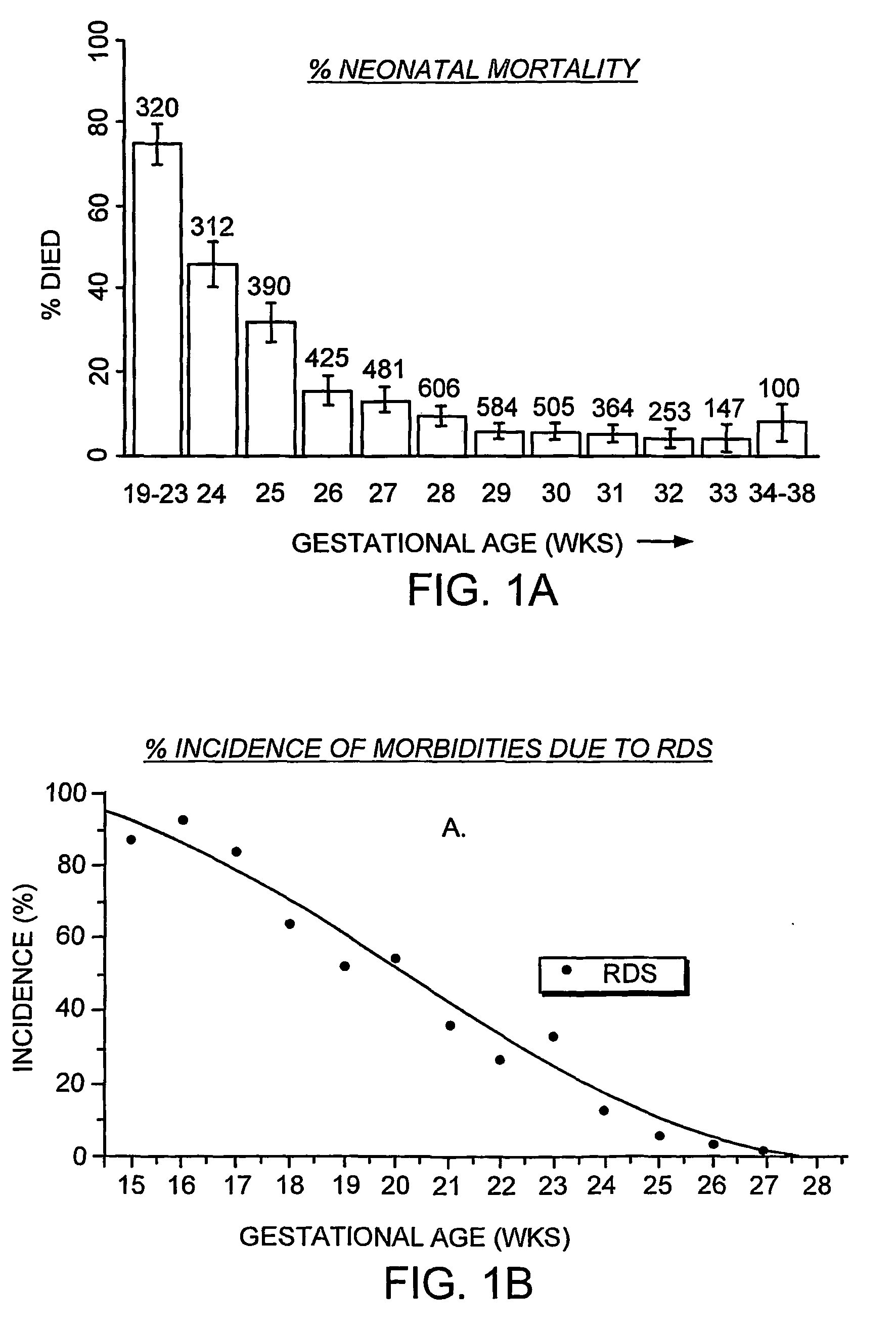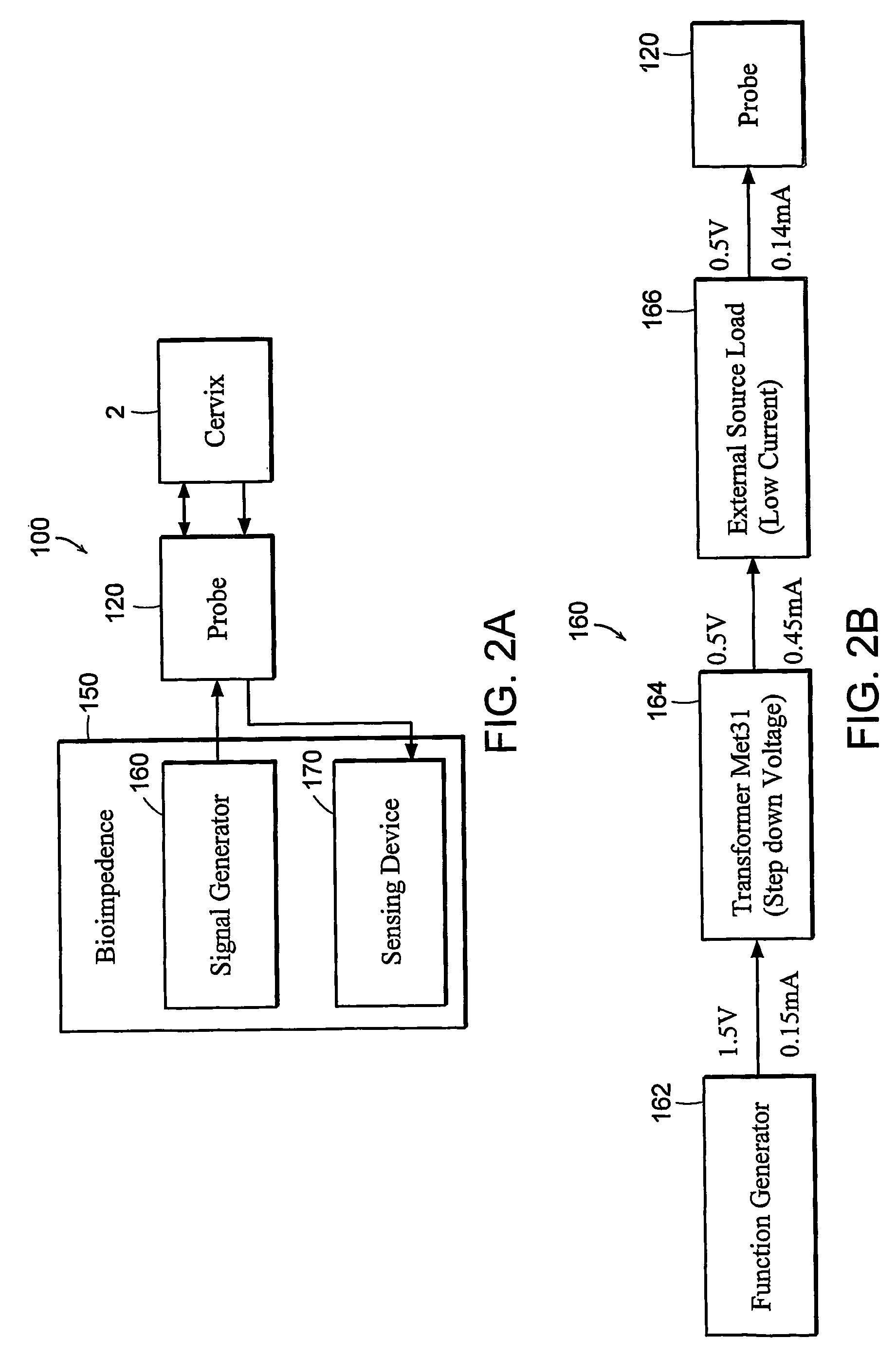Devices, systems and methods for bioimpedance measurement of cervical tissue and methods for diagnosis and treatment of human cervix
a cervical tissue and bioimpedance technology, applied in the field of devices, systems and methods for measuring bioimpedance, can solve the problems of pre-term labor or pre-term birth, pre-term neonates also face greater risks for long-term health problems, and cost billions of health care dollars annually
- Summary
- Abstract
- Description
- Claims
- Application Information
AI Technical Summary
Benefits of technology
Problems solved by technology
Method used
Image
Examples
Embodiment Construction
[0054]Referring now to the various figures of the drawing wherein like reference characters refer to like parts, there is shown in FIG. 2A, a block diagram that illustrates a bioimpedance measuring apparatus 100 according to the present invention that includes a bioimpedance measuring device or bioimpedance measuring probe 120 and a signal generating and sensing device 150. The signal generating and sensing device 150 includes a signal generator 160 and a sensing device 170 each of which comprises circuitry to carry out the signal generation and sensing functions. The signal generating and sensing device 150 is operably and electrically coupled to the bioimpedance measuring probe 120 and this probe also is electrically coupled to the tissue of the cervix 2 via electrodes 122 (FIG. 3A). In this way and as shown more specifically in FIG. 3A, an electrical circuit or pathway is in effect established between the signal generating and sensing device 150 and the cervical tissues when the ...
PUM
 Login to View More
Login to View More Abstract
Description
Claims
Application Information
 Login to View More
Login to View More - R&D
- Intellectual Property
- Life Sciences
- Materials
- Tech Scout
- Unparalleled Data Quality
- Higher Quality Content
- 60% Fewer Hallucinations
Browse by: Latest US Patents, China's latest patents, Technical Efficacy Thesaurus, Application Domain, Technology Topic, Popular Technical Reports.
© 2025 PatSnap. All rights reserved.Legal|Privacy policy|Modern Slavery Act Transparency Statement|Sitemap|About US| Contact US: help@patsnap.com



